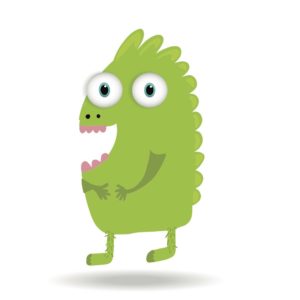
Learning to control impulses is an important task for our children, and all of us, to learn. Until our children learn to control urges to hit, kick, punch, pinch, bite, spit, name call and more, we’ll see all those behaviors emerge when life becomes overwhelming.
How is self-control established?
Let’s look at the young child’s brain. Our brains are perhaps best viewed as three brains in one.
Our reptilian brain (cerebellum) takes in all sensory information and handles issue of basic survival, instincts and nonverbal communication, as well as autonomous body functions. If the reptilian brain senses a threat to our safety, instinct for fight or flight takes over our thinking.
The next brain is the old-mammalian or limbic system, referred to also as our emotional brain. If the reptilian brain senses a threat, the limbic system is flooded with cortisol, a stress hormone, and the ability to tap into the thinking part of our brains, the neo-cortex (or new mammalian brain), is short circuited. The amygdala, the part of the limbic system that regulates emotional and allows us to reach into our memory and previous learning, shuts down.
When the reptilian brain senses that life is safe and calm, the limbic system is flooded with a different kind of neurotransmitter, GABA (gamma-aminobutrylic acid) which allows the limbic system to connect with the neo-cortex, allowing the connection to the prefrontal lobes, the place where the executive functions of planning, decision making and understanding consequences happen.
In order to learn effectively and control our impulses, the reptilian, the old-mammalian, the new mammalian and the prefrontal cortex need to be in a state of calm.
For a two-year-old the reptilian and old mammalian brain are the most active, with the new mammalian brain getting more function as language and experience develops.
The three-year-old with good language skills begins to be able to tap into the prefrontal cortex and to begin thinking ahead and planning.
The two-year-old is happily playing with some blocks when three-year-old big sister comes and knocks them down. Since the neo-cortex is not highly active in the two-year-old, the emotional and reptilian brain react instinctually. A hit. A push. A scream. The two-year-old body is awash with stress hormones that shut off the possibility of logical thought, or learning from the situation.
It is the adult who must act as the neo-cortex and the prefrontal cortex for the child by removing the child from the situation in a calm way until the stress hormones can calm and the reptilian brain senses safety again.
As language become stronger in the older child we can use language to help calm the different brain functions and help develop the prefrontal cortex. After the children involved in an incident have calmed down we can discuss what happened.
To gather details…
- We can ask what happened.
- We can name the feelings.
- We can offer alternatives.
- We can offer a dress rehearsal with role-playing.
Let’s take our block-building incident. After allowing some time to calm down, we ask what happened. For the two-year-old we ask yes /no questions that can be answered nonverbally with a nod or shake of the head.
Tell the story.
As we gather details we tell the story. “Sam was playing with the blocks and had built a tower. Brett came over and knocked down the tower. Sam got hit in the head with a block. That hurt. Sam bit Brett. That hurt. Brett hit Sam. That hurt. I took Sam to sit with me in the rocking chair.”
Give the feelings a name.
To help connect the emotional brain with the neo-cortex, name the emotions. “I feel sad that Sam and Brett got hurt. Sam, you look sad. Brett, you look sad.”
Come up with alternatives.
“What could we do differently? We need to be kind to each other and not bother other people’s things or activities. If Brett wanted to knock down a tower, he should build his own. If Brett bothers your things or activity, instead of biting or hitting you could say, stop. Can you say, stop, please? Doing your own activity is a better choice than bothering others. Saying stop is a better choice than hurting someone.”
Practice.
“Let’s practice. I’m building a tower and Brett wants to knock it down. Brett what could you do instead? Sam, what could I say to Brett? Yes. Stop, please. Using our words is a better choice that hurting each other.”
Until our children’s brains and bodies calm, the amygdala makes them do it. Until calm arrives, be your child’s prefrontal cortex.


2 Responses to “My Amygdala Made Me Do It!”